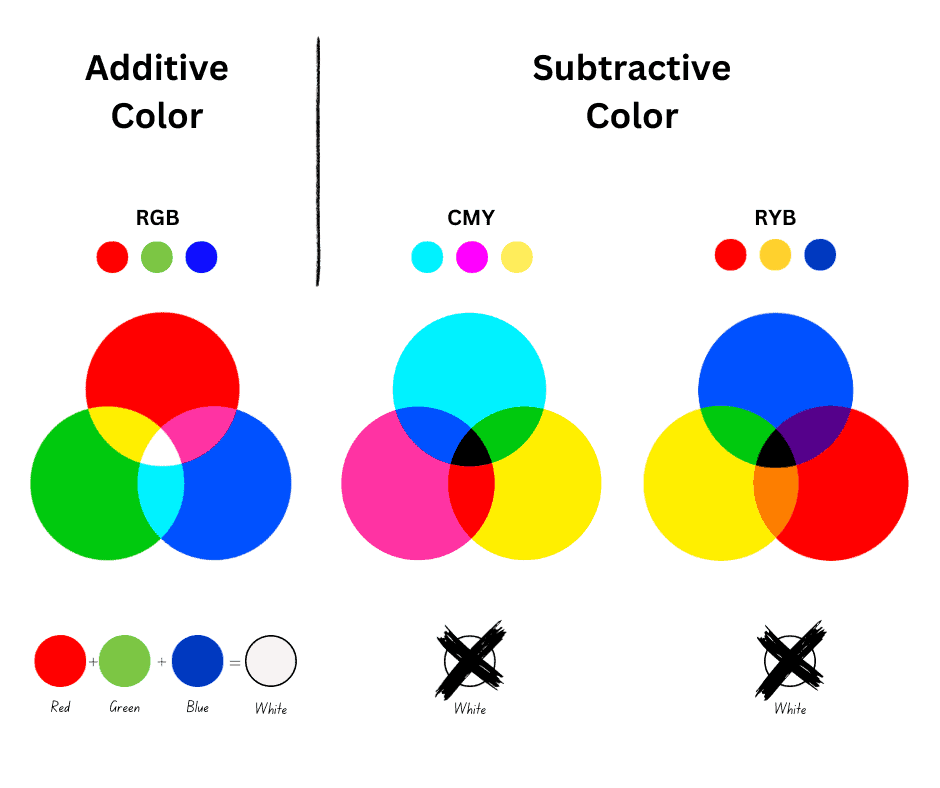When asking yourself what colors make white, you should know that white is a very special color, especially in subtractive mixing that deals with paints, dyes or pigments. If we talk about light, things are simpler.
White is the lightest color without a dominant hue. That’s why it’s called an achromatic color. It’s simple and clean.
White evokes feelings of innocence, delicacy, and cleanliness. It has the effect of calming and bringing clarity of thought. It is also associated with elegance, simplicity and kindness.
When it comes to physics, white is not considered a true color. It is not a physical color like the colors in the visible light spectrum.
Instead, white is the result of our eyes and brain processing a mixture of different wavelengths of light.
When you see a white object, it means that it reflects all wavelengths of visible light equally and absorbs none. Thus, it reflects the full spectrum of colors, making it appear white to your eyes.
White in Additive vs. Subtractive Mixing
Additive colors are achieved by adding colored light to black. So, additive mixing starts with black. You can call it darkness or lack of light.
Subtractive colors are created by absorbing some light wavelengths and reflecting others. This absorption, also called subtraction, can be partial or complete.
If additive color starts with black and ends with white, subtractive color begins with white (paper) and ends with black.
While RGB is an additive color space, RYB and CMY are subtractive color models.
When mixing pigments, you should know that some absorb (or subtract) certain colors (or wavelengths) while others reflect.
To achieve white, your pigment or paint must reflect all spectrum colors without absorbing any, which is impossible when working with ink or pigment.
So, in terms of paints, inks, or pigments, white is very special. Let’s see why!
What Colors Make White?
In reality, no mix of other colors will produce white paint. This is because any other paint color absorbs at least one particular wavelength.
A common misconception is that combining all the rainbow colors (red, orange, yellow, green, blue, indigo, and violet) will produce white. This mixture will result instead in a muddy gray.
Thus, you can’t mix material colors (inks or pigments) to get white.
Mixing material colors is called subtractive mixing. This type of mixing starts with white (or a sheet of paper) and gets darker by adding color.
So, there is no possibility to create white paint in subtractive mixing because white is the absence of color. The more color you add, the further away you get from achieving white.
The subtractive color models are CMY and RYB. CMY deals with inks and is used in the printing industry, while RYB uses physical pigments and is used in traditional art.
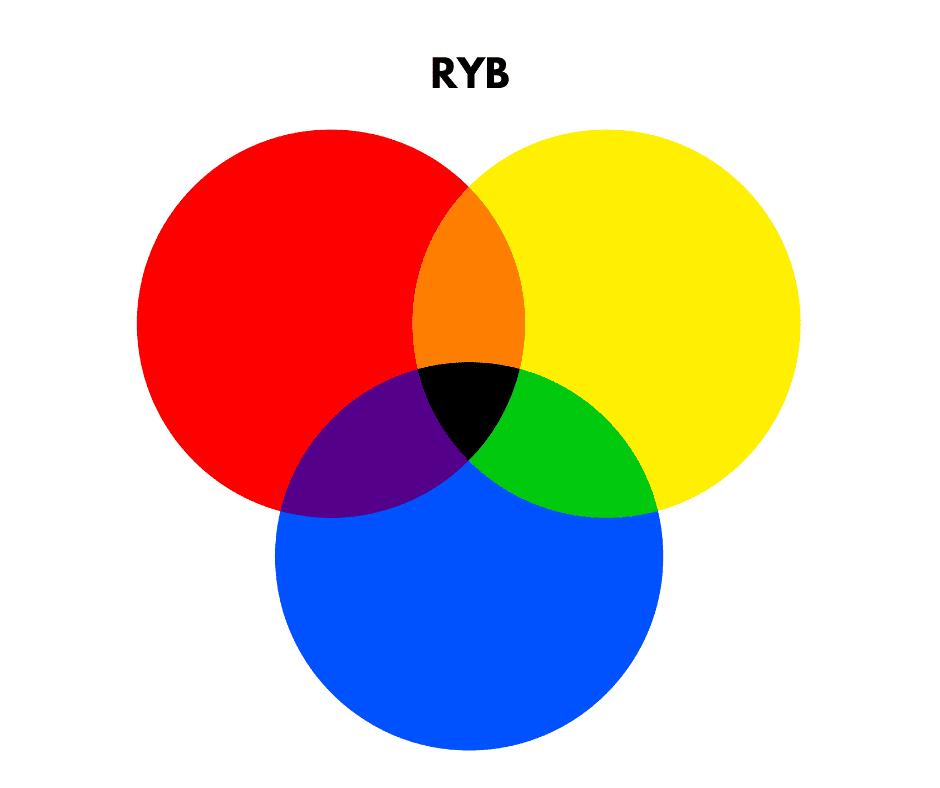
The traditional primaries are red, yellow and blue. However, red, yellow and blue are not the best primary colors to produce every other color. For example, you can’t create a vibrant green or a bright magenta on the RYB color model.
The primary subtractive colors are cyan, magenta, and yellow. They are called subtractive because inks subtract red, green and blue from white light.
So, using subtractive mixing, you can only remove color, not add color. For example:
- Cyan = White light – Red (so a cyan paint absorbs red light from white light but reflects blue and green light, which results in cyan)
- Magenta = White light – Green (magenta absorbs green light and reflects red and blue light)
- Yellow = White light – Blue (the yellow pigment subtracts blue light from white and reflects red and green light)
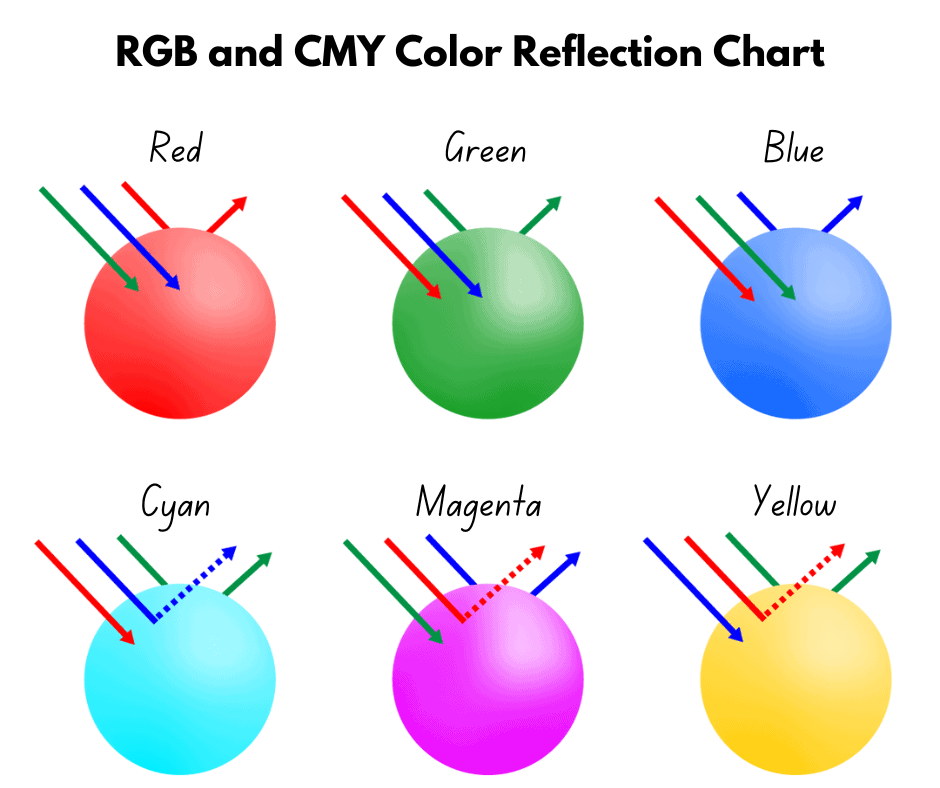
By mixing the subtractive colors (cyan, magenta and yellow), you create the additive colors: red, green, and blue:
- When you mix cyan and magenta pigments, they both absorb one of the primary colors they don’t reflect (cyan absorbs red, magenta absorbs green). This mixing only reflects blue, hence the result.
- Mixing cyan and yellow pigments produces green because cyan absorbs red, while yellow absorbs blue. So, the reflected color is green.
- Mixing magenta and yellow pigments results in red because magenta absorbs green, while yellow absorbs blue.
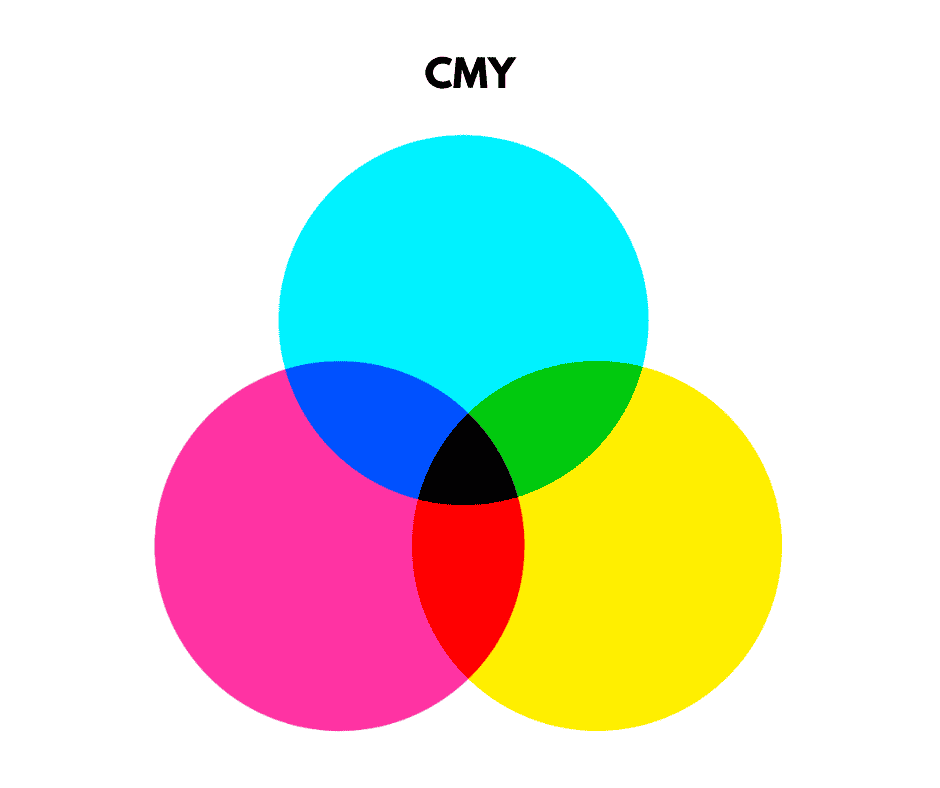
This model, also known as CMY (or CMYK in printing), masks colors on a white background by reducing the light that would be reflected.
When it comes to light, you can create white by optically mixing the primary colors of light: red, green, and blue. This is called additive mixing.
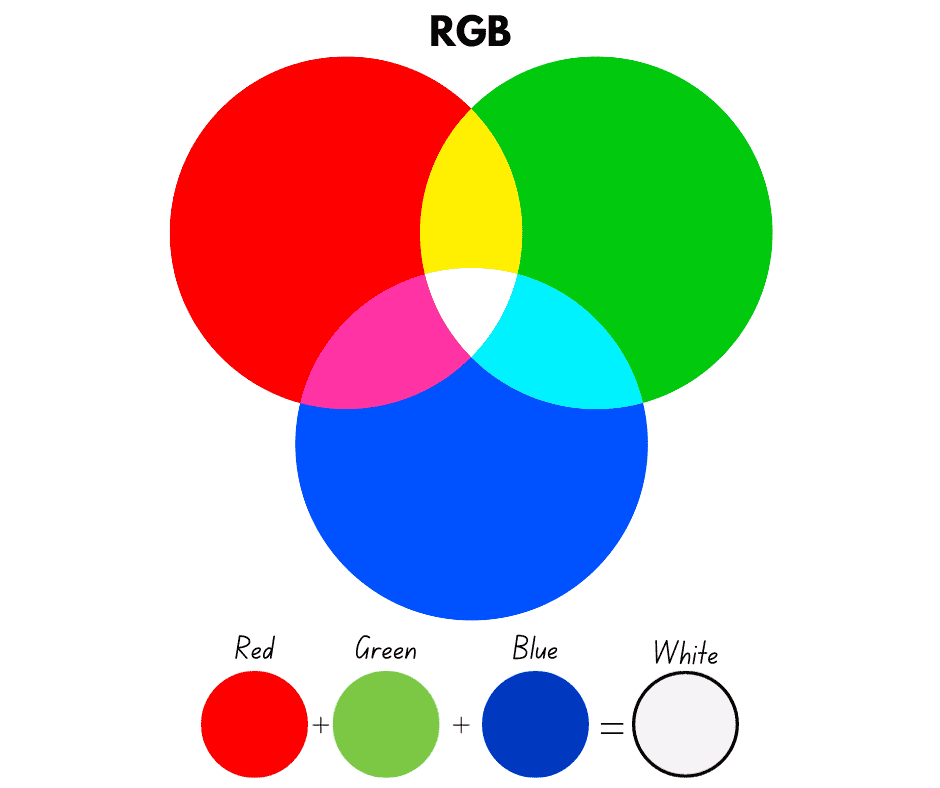
Additive mixing starts with black (or darkness) and gets lighter as you add the colors of light.
RGB is the color space that uses additive mixing. The primary colors of RGB are red, green, and blue.
By mixing the primary colors of light (red, green, and blue) at the maximum intensity, you get white. So white in the RGB color space is made of 100% red, 100% green and 100% blue.
Learn more about the RGB versus CMYK color modes.
However, you can produce different shades of white and off-white paint by using various mixtures of other colors. Remember that the result may not be a pure, bright white but an off-white or light grayish color.
Let’s find out how you can do this!
How to Make White Paint?
Creating white paint without pre-made paint can be challenging, as white is the base color for mixing other shades.
But paint manufacturers produce white paint. Wondering how this is possible? It’s simple. They use white pigments. These are usually made up of a mix of white pigment, alkyd resin, or acrylic.
There are many white pigments they use. The most popular white pigments are calcium carbonate, mineral powder, carbonate zinc oxide, and calcium hydroxide.
How to Mix Different Shades of White?
Even though creating white paint without pre-made white paint can be challenging, you can create different off-white shades.
Here are some combinations to achieve different shades of white:
Greige: Raw Umber + Paynes Gray + White
Off White: Black+ White
Ivory: Lemmon Yellow + White
Butter: Yellow Ochre + Golden Yellow + White
Beige: Brown + White
Eggshell: Yellow + Light Brown + White
Almond: Raw Sienna + White
Light Honey: Dark Brown + Yellow + White
Of course, most of the off-white paint colors above involve 3-4 parts white.
For example, you can make butter color by mixing 4 parts white and 1 part of an equal mixture of Yellow Ochre and Golden Yellow. This will result in a soft, creamy yellow.
If you want to make almond paint, mix 4 parts white and 1 part Raw Sienna.
To make khaki paint, mix 4 parts white, 1 part Raw Umber, and 1 Raw Sienna. The result will be a dark beige.
If you want to get gray paint with beige undertones (also called greige), mix 4 parts white, 1 part Raw Umber and 1 part Paynes Grey. You’ll achieve a cement color if you don’t use Paynes Gray.
As a tip, start with the white base over which you add color.
Remember that adding black or brown can quickly alter your color.
However, there is an advantage when it comes to working with white paint. You can brighten up the resulting color by adding more white.
Last Words
In short, the answer to the question of what colors make white paint is no mixture of other colors because any other paint absorbs some of at least one wavelength. In order to create white paint, your paint color must reflect most light rays away from it, absorbing almost none of them, which is impossible.
However, in the subtractive mixing that deals with light, mixing red, green and blue light results in white. White light!

